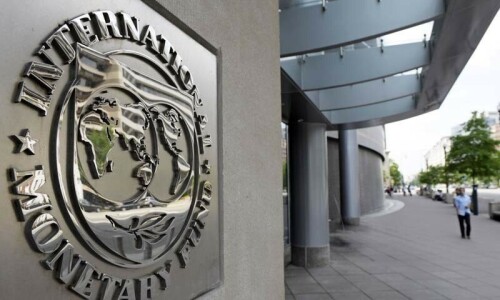 FLORENCE: After 10 years of painstaking study and restoration that tested both cutting edge technology and human patience, one of the greatest masterpieces of the Italian Renaissance is returning to the public.
FLORENCE: After 10 years of painstaking study and restoration that tested both cutting edge technology and human patience, one of the greatest masterpieces of the Italian Renaissance is returning to the public.
Raphael’s “Madonna of the Goldfinch” is a survivor.
The 107cm-by-77cm oil-on-wood, showing the Madonna with two children caressing a goldfinch, has outlived everything from the collapse of a house in 1547 that shattered it to the ravages of time and the mistakes of past interventions.
The result of the restoration is stunning. Centuries of brown film and grime are gone. The Madonna’s cheeks are pink.
Her robes are deep red and blue and one can almost hear the cascade of a stream in the background Tuscan countryside.
“This patient gave us the most shivers and the most sleepless nights,” said Marco Ciatti, head of the department of paintings at Florence’s Opificio Delle Pietre Dure, one of Italy’s most prestigious state-run art restoration labs.
“We spent two whole years studying it before deciding whether to go ahead because with the damage it suffered in the past – which was clearly visible in the x-rays – a restoration attempt could go wrong,” he said.
X-rays, CAT scans, reflective infra-red photography, lasers, men and women in white coats, microscopes, latex gloves – it sounds like the stuff of hospitals and in many ways it is.
But the Opificio is no ER. It has everything but the pressures of time. It is a place of slow healing.
“In the past we decided not to restore something because the risks of damaging or altering the original were too great,” said Ciatti, 53. “We see ourselves as a doctor who treats the patient as a whole rather than concentrating on a specific illness.”
Raphael, who lived from 1483 to 1520, painted the panel in about 1506 as a gift for the marriage of Lorenzo Nasi, a rich wool merchant.
Two children
Known in Italian as the “Madonna del Cardellino”, it shows the Virgin with two children symbolising the young Christ and John the Baptist. The goldfinch is a symbol of Christ’s future passion because the bird feeds among thorns.
When the Nasi house collapsed in 1547, the work shattered into 17 pieces. Ridolfo di Ghirlandaio, a Raphael contemporary, used nails to join the pieces and paint to hide fractures.
It later became part of the collection of Florence’s powerful Medici family, who commissioned several interventions aimed primarily at covering traces of the fissures.
For the past 10 years, Patrizia Riitano, 52, has been living, breathing, dreaming and touching Raphael. It has been her right eye that has been scrutinising him and her right hand that has been cleaning and retouching him.
“I am just a technician,” the chief restorer of the project said with humility. “But, yes, I think I probably know this painting almost better than Raphael. He looked at it, sure, but all these years I have been looking at it with a microscope”.
She lifted the painting out of a wooden box with the confidence of someone who has done it many times – like a mechanic changing a tyre – but then gently positioned it at the centre of an easel with the love of a mother adjusting her child’s scarf on a winter day.
“To think of it, I have spent more time with him than with my daughter,” said Riitano, a 30-year veteran of restoration.
Earlier restorers covered cracks and painted outwards, painting over Raphael’s brushstrokes. She instead removed the coverings and painted inwards to reveal more Raphael.
She mostly stopped when she reached the original transparent varnish that Raphael put over the painting after he finished, so Riitano knew that everything below that was his. Some traces of time and travail were kept to maintain overall equilibrium.
‘Maybe an sms’
“I wonder if he is satisfied. I hope so. Perhaps he’ll send me a message from the beyond, maybe an SMS,” she said.
Next month, the painting goes on display in Florence’s Palazzo Medici in an exhibition on the restoration. Then it will return to its long-time home in room 26 of the Uffizi Gallery.
“We will celebrate it like the return of our prodigal daughter,” said Antonio Natali, the head of the Uffizi.
While Riitano was the main restorer, the massive undertaking was a multi-disciplinary team effort involving about 50 people, including wood specialists and photography technicians.
Wood experts decided that large nails holding together parts of the painting should stay because removing them would do more harm than good and small, deteriorating nails should go.
“It was a very long process. We had to decide if to remove, what to remove, when to remove,” said Riitano.
Ciatti, the head of the paintings department, said that, as rewarding at the project was, the real joy was sharing innovative techniques and scientific discoveries.
“We are also a research and teaching centre. Every restoration, whether the artist was a giant or not, is part of a greater effort to help future restorers. We publish everything we do,” he said.—Reuters









































Dear visitor, the comments section is undergoing an overhaul and will return soon.